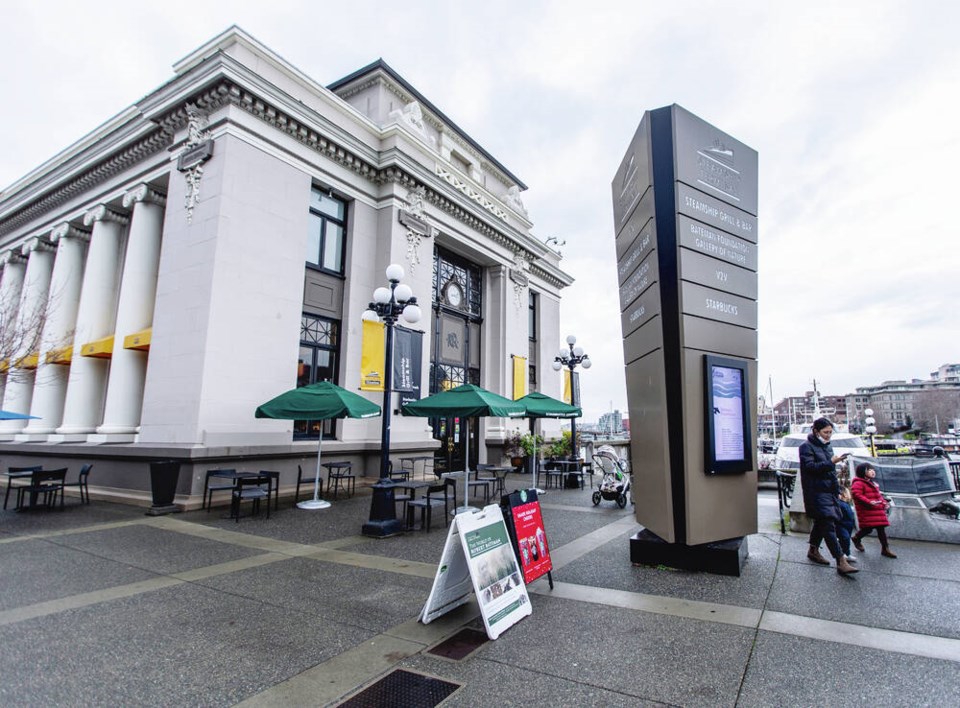Museums everywhere face challenges as today’s society expects their institutions to be respectful of the past and more relevant in the future.
Much of the friction is related to recognizing “whose history is it anyway?” and how a broadly inclusive lens can be applied to understand the as-yet-untold stories and perspectives that differ from the traditional narrative.
While cherishing history is an accepted community value, efforts to include aspects of gender, race, differing perspectives and the context of earlier times seem to be the major stumbling points as museums struggle to find their way.
Here in Victoria our own museums have encountered these same headwinds, especially in the way museums have failed to respect and embrace the long-standing First Nations narratives in our province.
The Maritime Museum of B.C. could be the exception. While it has not been ideal that the 68-year-old museum was required to close and vacate the Courthouse Building in Bastion Square eight years ago due to seismic concerns, it has given time for reflection.
Among the museum’s massive collection of 40,000 objects, none are possessions that have been taken from Indigenous Peoples. The Maritime Museum has never tried to present the history of First Nations or “Indigenize” the museum. It would be disrespectful to attempt to do so today.
It has always been focused on presenting the history of the coast from an explorer/settler perspective. The library and research resources of the Maritime Museum in this topic area have been widely acclaimed; but that’s not enough.
The establishment of the Maritime Museum in the Steamship Building would be a fresh start and an opportunity to present a new story that could be referred to as the Future of History.
In addition to relocating the museum in this ideal facility, many of us in the community are hopeful that the Lekwungen People may choose to share their history, as they wish, in their own space associated with the Maritime Museum and dedicated to this purpose.
Respecting their rightful philosophy of “nothing about us without us,” this concept could enable everyone to value and better understand the 10,000-year history of the West Coast that we all call home.
In addition to re-establishing a new Maritime Museum in the Steamship Building, private philanthropy would underwrite the costs to enable the Lekwungen to proudly return to the Inner Harbour in a purpose-built cultural space of their own, linked with the Maritime Museum.
It is our hope that they might choose to host an ever-changing series of exhibits and Indigenous experiences from the entire coast.
We believe the opportunity to place two perspectives and cultures side by side will begin a tangible — and ongoing — example of reconciliation. A self-directed Lekwungen presence will profoundly impact the offerings of the new Maritime Museum.
Together we will reinvigorate the Inner Harbour as a significant museum precinct.
The Maritime Museum has a proven ability to be financially sustainable, largely due to self-generated revenues and donations from the community. Broad community support, as evidenced by a recent $1-million private donation, makes it clear there is a strong desire for the Maritime Museum to return to a prominent place on the Inner Harbour. Many of us are prepared to support this goal.
To make this happen, there is only one thing the provincial government needs to do: Return the government-owned Steamship Building to the public domain by leasing the vacant spaces in the building to this project.
Two floors of the building have remained vacant for years. The entire second floor will also soon be vacant as the Bateman Foundation chooses to move to a more suitable location.
The Steamship Building is the platform that is needed to establish this new community-building and reconciliation initiative so we can all understand ourselves and others better. This is an opportunity to make history together.
>>> To comment on this article, write a letter to the editor: [email protected]



